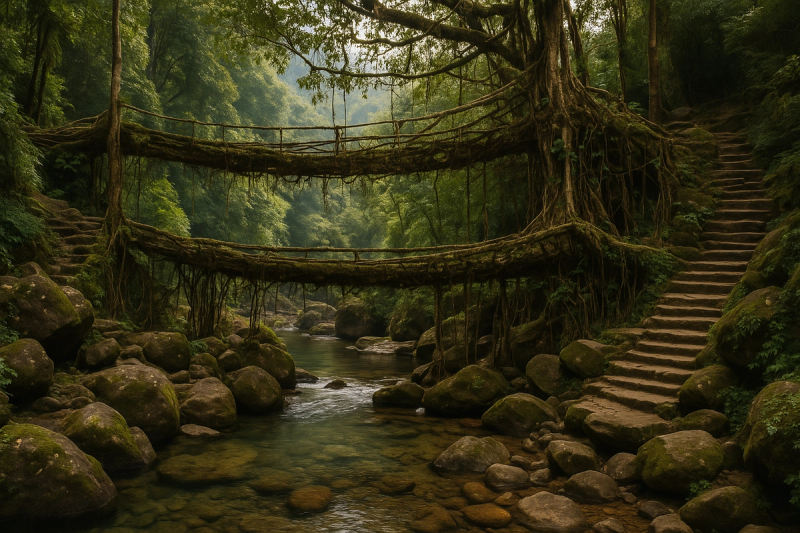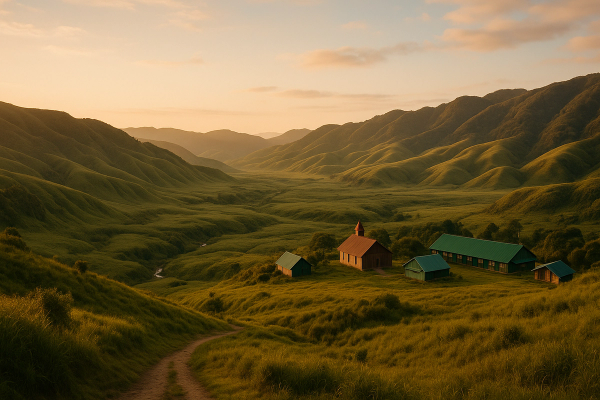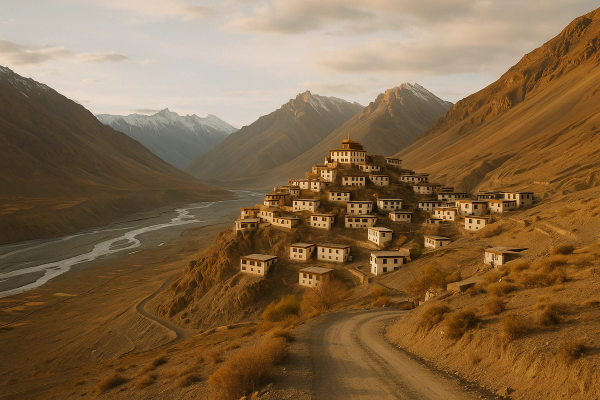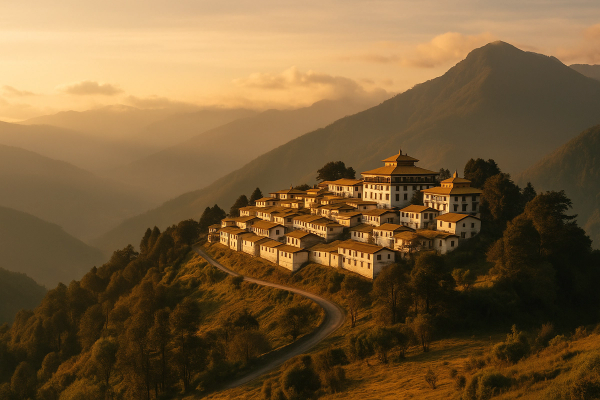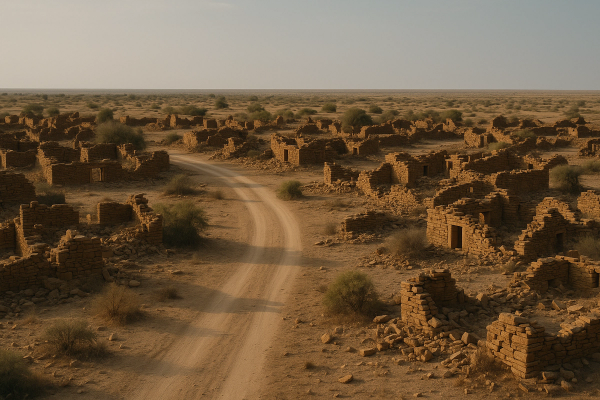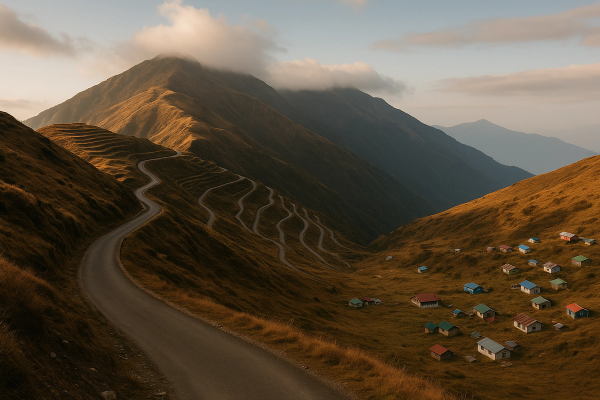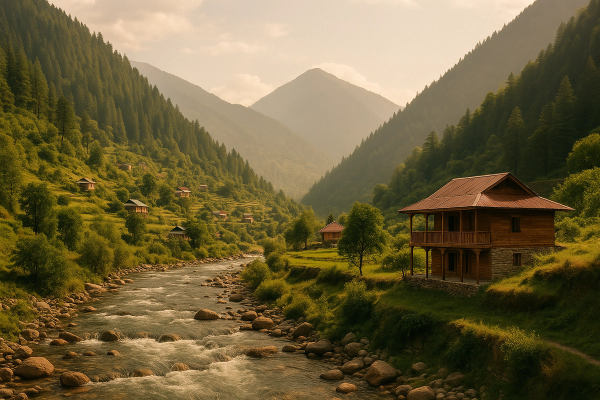Double Decker Root Bridge Trek: Cherrapunji & Nongriat – my not-so-perfect, very real guide#
I’ve wanted to do the Double Decker Root Bridge trek for so long. You know those places that pop up on Insta all the time and you keep thinking… ok, but does it actually look like that in real life? Cherrapunji (Sohra for locals) totally does. It’s misty and mossy and somehow everything is green even when your shoes arnt. The valley down to Nongriat felt like entering a different mood of India, like someone turned down the city noise and left only water and leaves and kids laughing at the suspension bridges. Honestly, I didn’t expect to love the climb DOWN so much and then hate-love the climb UP even more. Classic me.¶
The trek itself: Tyrna to Nongriat (aka legs will cry, heart will smile)#
Start point is Tyrna village, about 20–30 mins from Sohra town by car. The trek begins with steps. Then more steps. People say 3,500–3,800, but who’s counting after 2,000 when your thighs start bargaining with god. It’s mostly concrete stairs carved into the hillside, shaded by areca and betel nut trees, bamboo, ficus. You pass little houses, that sweet smell of smoke from kitchen fires, kids saying hello, and a few resting spots where aunties sell water and bananas. Down in the valley, you’ll cross narrow steel suspension bridges over crystal streams that look like they were designed by a stubborn mountain architect. Little wobble, lot of thrill. Monsoon season means leeches (sorry), dry season means sweat. Pick your poison. I took it slow, chatted with folks, didn’t try to “PR” my time because me and him went — my friend, who’s like a fitspo type — and he still took more than 2 hours down. Coming back up took us between 2.5 and 4 hours. Depends on how many selfies you’ll stop for and if your lungs have decided to unionize.¶
Somewhere on those steps, it hits you: the root bridge wasn’t built in a day, and neither is your patience. Take the next step, sip water, smile at the auntie selling oranges. That’s the rhythm.
Getting there: Guwahati → Shillong → Sohra → Tyrna (with desi jugaad options)#
If you’re flying, Guwahati is the easiest entry. From there, shared Sumo to Shillong runs pretty frequently in daytime – approx ₹350–500 per seat. From Shillong (Police Bazar side), you can catch another shared Sumo or local bus to Sohra for around ₹100–200 depending on timing and mood of the driver, lol. Private cab Shillong to Sohra is ₹2,500–3,500 one way if you want convenience. From Sohra town, Tyrna is 14–18 km; local taxis charge ₹300–600. If you’re many people, split the cab. If you’re solo, just ask at tea stalls; someone always knows a bhaiya driving in that direction. Network-wise, Jio usually does ok in Sohra, Airtel patchy, BSNL does what BSNL does. In the valley (Nongriat), pretty much no network. So make calls before you descend. Carry cash — ATMs in Sohra are there but sometimes out of cash. UPI works in several shops up top; down in Nongriat, signal is a hit-or-miss so cash is king. There’s sometimes a small community fee to enter the trail, ₹50–₹100 per person. Good to keep change and a smile.¶
When to go: rain romance vs dry comfort#
Sohra gets rain like it’s a hobby. Peak monsoon is roughly June to September — everything looks lush, streams are strong, waterfalls dramatic, but steps are slippery and leeches are… enthusiastic. Best comfort window is October to April: less rain, clearer skies, warm days, cool nights. Summer months around April–May can be humid, still nicer for walking. Try to start early morning no matter the month — cooler, fewer people, more bird sounds. As of 2025, trails are in decent condition and there’s a stronger push for “responsible tourism” by Meghalaya Tourism and the local communities. Sometimes, if there’s a landslide or a bridge repair, sections may be temporarily closed. Always check with your homestay or the local taxi stand in Sohra the day you plan to hike. Quick tip: if you love waterfalls at full power, monsoon is magic, but wear leech socks and carry a light rain jacket. If you like easy footing and clearer pools, post-monsoon and winter is your jam.¶
Stay: Sohra vs Nongriat (and why sleeping in the valley kinda changes the trip)#
You have two main base styles. Sohra (Cherrapunji) has more hotels and homestays, range roughly ₹1,500–₹4,000 per night for simple double rooms, going higher for boutique resorts with nice views of valleys and distant waterfalls. Bigger rooms, easier parking, hot meals, more options. Nongriat is different. It’s homestays run by local families, thin-walled rooms with clean beds, buckets for bathing, the sound of river at night. Rough range ₹500–₹1,200 per person per night including simple dinner and breakfast sometimes. Power cuts happen. Wi-Fi? Usually not. But stars, and quiet, and waking up before most day trekkers arrive at the bridge — absolutely priceless. If you can, do one night in Nongriat. Book ahead by calling (remember: no network in the valley), or ask your Sohra host to help arrange. Pack light if you plan to carry your bag down. Pro tip: keep your big suitcase at your Sohra stay, bring only a daypack or small duffel to Nongriat.¶
Food & Khasi flavours: eat, sip, repeat#
I’m not exaggerating: food tasted better after every flight of steps, lol. In Sohra, look for jadoh (rice cooked with meat, usually pork) at local eateries, tungrymbai (fermented soybean), dohkhleh (pork salad with onions, green chilli, lemon), and strong black tea. In the valley, expect simple plates — rice, dal, egg curry, veg sabzi, sometimes chicken. Maggi is a religion on treks, let’s be honest. Try oranges and pineapple, they’re super juicy here. Some places serve kyat (local rice beer) but don’t overdo it before hiking back up, your knees will file a complaint. Kwai (betel nut) is common — you’ll see folks chewing and chatting. Respect the rhythm, ask before you click photos of people. Meals are mostly ₹100–250 depending on portions. Carry some nuts, chocolate, ORS, and a reusable water bottle you can refill at homestays.¶
The Double Decker Root Bridge up close, plus Rainbow Falls#
The main star is the Umshiang Double Decker Root Bridge at Nongriat. It’s not “built” in our usual sense; it’s grown. The Khasi folks carefully guide the aerial roots of the Ficus elastica (rubber fig) across the stream using betel nut trunks, weaving and training it for years till it becomes a living pathway. Some say 15–20 years to form, and then decades more to strengthen. Standing on it, you’ll feel cool air rising from the water, moss underfoot, and the quiet steady strength of something alive that decided to become architecture. Nearby natural pools are emerald and too inviting. Dip your feet but don’t apply sunscreen right before, it messes with water quality. If you have time, head to Rainbow Falls — another 1.5–2 hours beyond Nongriat, a proper workout. The water there looks impossibly blue on clear days, not filter-blue, actually-blue. Start early, carry enough water, and snack. I did Rainbow Falls and then crawled, metaphorically, back to the homestay and slept like a log.¶
Safety, permits, and the whole responsible tourism vibe#
There isn’t a complicated permit system for Indians here. Usually you’ll pay a small entry or community fee at the start. A guide is not mandatory, but if you’re unfamiliar with mountain trails or traveling with kids or older folks, hiring a local guide is worth it — they know shortcuts, updates on bridges, and also tell cool stories. Don’t carry plastic bottles if you can help it. Many villages request you pack out whatever you bring in. Drones are often restricted unless you have permission from the village headman or tourism office — ask first, seriously. Footwear: grippy trekking shoes please. In monsoon, leech socks help, or some folks apply salt or Dettol — personally I just flicked them and moved on. Start early to avoid being stuck on steps after dark. Mobile network disappears somewhere on the descent; inform someone of your plan. In medical emergency, locals are incredibly helpful, but it’s still remote. Keep basic meds, a bandage roll, a power bank, and a tiny torch. Also, step on stone edges not mossy centers when bridges are wet. Don’t rush. No one’s getting a medal.¶
Hidden-ish stuff near Sohra that made me grin#
If you’ve got an extra day up top, check Wei Sawdong waterfall (three-tired, ridiculously photogenic, moderate walk down), Dainthlen Falls with that moody plateau vibe, Nohkalikai (yes it’s famous but still hits different), Arwah caves (great light and formations), and Seven Sisters Falls viewpoint. There’s also Garden of Caves for a whole set of cascades. Sohra has local weekly markets — ask your host for the day — fantastic for fresh fruit, black pepper, bamboo products. Hiring a cab for a half day loop generally goes from ₹1,800–3,000 depending on the number of spots and your bargaining charm. Try small tea stalls, talk to people, don’t keep your trip only inside Instagram frames. Meghalaya opens up when you actually listen.¶
Budget: roughly what you’ll spend#
Here’s a very normal, not fancy budget for 2–3 days around Sohra + the Nongriat trek. Travel Guwahati to Shillong shared taxi: ₹400. Shillong to Sohra shared: ₹150. Sohra local taxis to Tyrna and sightseeing: say ₹2,000 total if you split or plan cleverly. Stays: Sohra ₹2,000 per night, Nongriat ₹800 per person including meals sometimes. Food daily: ₹300–600. Entry/community fees: ₹50–₹100. Guide if you hire: ₹800–₹1,500 for the day depending on route. Random snacks, chai, buttas, pineapples: ₹200. So yeah, under ₹8,000–₹12,000 for a short trip if you’re not splurging. Of course, it changes if you take private cabs everywhere or book resort stays. Cash matters; keep change. ATMs exist in Sohra and Shillong, but I legit had one occassion when the ATM was empty and the guy behind me sighed so loudly, it echoed.¶
What I wish I knew (so you don’t repeat my mistakes)#
I carried too much in my backpack. Rookie. Leave heavier electronics up top. Also, bring a bit of sugar or jaggery, it actually helps with sudden energy dips. Two liters of water minimum. Leech socks in peak rain, else just chill and flick. Start by 7 am if possible. Do Rainbow Falls only if you’ve got time and decent knees. Vary your pace, stretch calves sometimes. Don’t rush photos. Step off the bridge if there’s a queue and let others pass. Ask before diving into the pools, water levels change. Oh, and sleep in Nongriat at least once if your plan allows. Mornings there feel like India slowed down just enough for you to breath properly.¶
Quick FAQ, answered like you asked me over chai#
- Do I need a guide? No, trail is straightforward if you follow steps and signs, but a local guide is helpful and supports the community.
- How long is the trek? Tyrna to Nongriat down in 1.5–2.5 hours, up in 2.5–4 hours. Rainbow Falls adds 3–4 hours round trip.
- Can kids/parents do it? Depends on fitness and knees. There’s no technical climbing, but steps are many. Take breaks, carry water, start early.
- Network and charging? No network in Nongriat mostly. Carry a power bank. In Sohra, Jio/Airtel normal-ish.
- Drones? Ask permission. Many villages discourage them without approvals. Respect it.
- Bathrooms? Sohra hotels good. Nongriat homestays have basic clean bathrooms, bucket baths. Carry your own towel.
- Food availability? Simple meals everywhere. If you’re vegetarian, you’re fine. If you’re vegan, mention clearly at homestay and they’ll try.
- Parking at Tyrna? Limited spaces along the road. Try to come early and park considerately.
Respect the place: tiny dos and don’ts that matter#
- Don’t throw plastic. Pack-in, pack-out. Easy habit, big impact.
- Ask before clicking portraits. A smile opens more doors than a camera.
- Stay on the steps and bridges. Don’t trample roots or new plantings.
- No loud music, please. Let the river be the soundtrack.
- Buy local fruit/snacks, tip your guide, support homestays. Money returning to the valley keeps the bridges healthy.
- If you want to swim, check depth first. Rocks are slippery, water can be deceptively strong after rain.
So… was it worth it? My honest take#
Yes. A loud, happy yes. The Double Decker Root Bridge isn’t just a photo stop. It’s a living thing, a quiet collaboration between people and tree roots, patience and rain, time and stubbornness. The trek adds weight to that story — by the time you put your foot on those roots, you’ve earned the calm that comes with it. I left with legs complaining and heart content, you know that very specific combo. If you’re thinking about going, don’t overplan. Carry what you need, respect the place, talk to people, and enjoy walking. I’d go again tomorrow if my calves would stop sending me threatening texts.¶
If you want more chill, straight-up India travel stories and practical guides, I occasionally drop stuff on AllBlogs.in — poke around there when you’re planning, it’s good timepass but also genuinely helpful.¶

